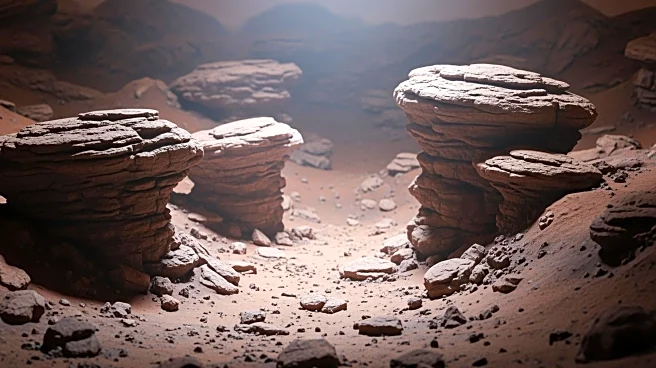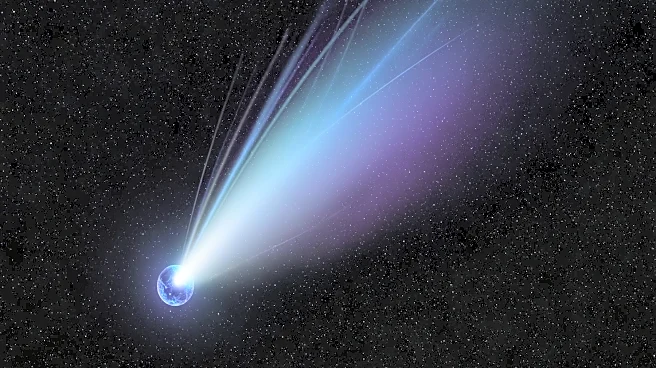What's Happening?
NASA's Perseverance rover has discovered mineral and organic associations in the Jezero Crater on Mars that may indicate ancient microbial life. The findings, published in Nature, highlight chemical signals
in a sedimentary formation known as Bright Angel, which are similar to those tied to biological processes on Earth. The rover identified minerals such as vivianite and greigite, which are often associated with microbial activity in low-oxygen environments. While these results do not confirm life, they are considered potential biosignatures that warrant further investigation.
Why It's Important?
The discovery is significant as it provides the strongest evidence yet that Mars may have once harbored life. If confirmed, this could revolutionize our understanding of life beyond Earth and influence future space exploration missions. The findings also offer insights into Mars' past environment, suggesting it was once water-rich and potentially habitable. This could impact scientific theories about the planet's history and its capacity to support life.
What's Next?
Further analysis is required to confirm the biological origin of the signals. The rock sample remains on Mars, awaiting retrieval by a future mission under NASA and the European Space Agency's Mars Sample Return campaign. Once returned to Earth, scientists will conduct laboratory-grade analysis to examine isotopic ratios and molecular structures, which are crucial for confirming the presence of ancient microbial life.
Beyond the Headlines
The integration of artificial intelligence in Perseverance's instruments played a key role in the discovery, allowing for real-time identification of mineral targets. This technological advancement enhances the precision of in situ analysis and could be pivotal in future space missions.












